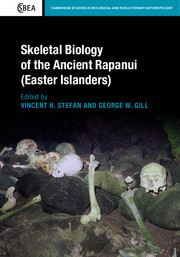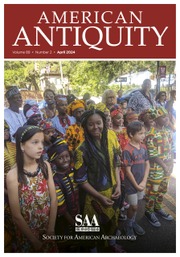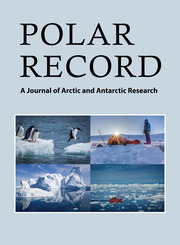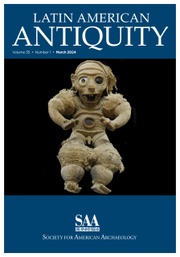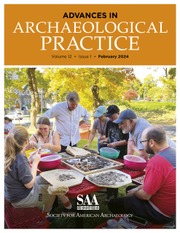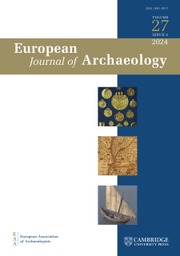Bioarchaeological and Forensic Perspectives on Violence
How Violent Death Is Interpreted from Skeletal Remains
£38.99
Part of Cambridge Studies in Biological and Evolutionary Anthropology
- Editors:
- Debra L. Martin, University of Nevada, Las Vegas
- Cheryl P. Anderson, University of Nevada, Las Vegas
- Date Published: June 2020
- availability: Available
- format: Paperback
- isbn: 9781107623088
£
38.99
Paperback
Other available formats:
Hardback, eBook
Looking for an inspection copy?
This title is not currently available on inspection
-
Every year, there are over 1.6 million violent deaths worldwide, making violence one of the leading public health issues of our time. And with the 20th century just behind us, it's hard to forget that 191 million people lost their lives directly or indirectly through conflict. This collection of engaging case studies on violence and violent deaths reveals how violence is reconstructed from skeletal and contextual information. By sharing the complex methodologies for gleaning scientific data from human remains and the context they are found in, and complementary perspectives for examining violence from both past and contemporary societies, bioarchaeology and forensic anthropology prove to be fundamentally inseparable. This book provides a model for training forensic anthropologists and bioarchaeologists, not just in the fundamentals of excavation and skeletal analysis, but in all subfields of anthropology, to broaden their theoretical and practical approach to dealing with everyday violence.
Read more- Bioarchaeology engages with forensic anthropology to reveal the empirical issues within the study of violence, warfare, surveillance and human rights
- Presents engaging case studies on violence highlighting methods for reading the bones and interpreting the violent encounters that took place
- Examines innovative methodologies to provide detailed and nuanced context for violence in past and present situations
Customer reviews
Not yet reviewed
Be the first to review
Review was not posted due to profanity
×Product details
- Date Published: June 2020
- format: Paperback
- isbn: 9781107623088
- length: 341 pages
- dimensions: 230 x 153 x 20 mm
- weight: 0.5kg
- contains: 61 b/w illus. 17 tables
- availability: Available
Table of Contents
List of contributors
Part I. Introduction:
1. Introduction: interpreting violence in the ancient and modern world when skeletonized bodies are all you have Debra L. Martin and Cheryl P. Anderson
Part II. Overview and Innovative Methodologies:
2. Killed in action? A biometrical analysis of femora of supposed battle victims from the Middle Bronze Age site of Weltzin 20, Germany Stefan Flohr, Ute Brinker, Elena Spanagel, Annemarie Schramm, Jörg Orschiedt and Uwe Kierdorf
3. The taphonomy of maritime warfare: a forensic reinterpretation of sharp force trauma from the 1676 wreck of the Royal Swedish Warship Kronan Anna Kjellström and Michelle D. Hamilton
4. The determination of homicide vs. suicide in gunshot wounds Vincent H. Stefan
5. The first cut is the deepest: looking for patterns in cases of human dismemberment Andrew C. Seidel and Laura C. Fulginiti
6. Victims of violence? A methodological case study from precolonial Northern Mexico Cheryl P. Anderson
Part III. Ritual and Performative Violence:
7. Signatures of captivity and subordination on skeletonized human remains: a bioarchaeological case study from the ancient Southwest Ryan P. Harrod and Debra L. Martin
8. Classic Maya warfare and skeletal trophies: victims and aggressors Rebecca Storey
9. Face me like a man! (or, like a woman): antemortem nasal fractures in pre-Columbian San Pedro de Atacama Christina Torres-Rouff and Laura M. King
10. Why some bodies matter: defacement and narrative in historical forensics cases William N. Duncan and Christopher M. Stojanowski
Part IV. Violence and Identity:
11. Violence in life, violence in death, resiliency through repatriation: bioarchaeological analysis and heritage value of Yaqui skeletal remains from Sonora, Mexico Heidi J. Bauer-Clapp and Ventura R. Pérez
12. Interpreting skeletal trauma and violence at Grasshopper Pueblo (AD 1275–1400) Kathryn M. Baustian
13. The contribution of forensic anthropology to national identity in Chile: a case study from the Patio 29 mass grave Elizabeth M. DeVisser, Krista E. Latham and Marisol Intriago Leiva
14. Cranial trauma and cranial modification in post-imperial Andahuaylas, Peru Danielle Kurin
15. Allies today, enemies tomorrow: a comparative analysis of perimortem injuries along the biomechanical continuum Melissa Scott Murphy, Brian Spatola and Rick Weathermon
16. Interpreting gunshot trauma as context clue: a case study from historic North Las Vegas, Nevada John J. Crandall, Ryan P. Harrod, Cheryl P. Anderson and Kathryn M. Baustian
Part V. Concluding Thoughts:
17. Living on the sidelines of death: anthropologists and violence Alison Galloway
Index.-
General Resources
Find resources associated with this title
Type Name Unlocked * Format Size Showing of
This title is supported by one or more locked resources. Access to locked resources is granted exclusively by Cambridge University Press to lecturers whose faculty status has been verified. To gain access to locked resources, lecturers should sign in to or register for a Cambridge user account.
Please use locked resources responsibly and exercise your professional discretion when choosing how you share these materials with your students. Other lecturers may wish to use locked resources for assessment purposes and their usefulness is undermined when the source files (for example, solution manuals or test banks) are shared online or via social networks.
Supplementary resources are subject to copyright. Lecturers are permitted to view, print or download these resources for use in their teaching, but may not change them or use them for commercial gain.
If you are having problems accessing these resources please contact [email protected].
Sorry, this resource is locked
Please register or sign in to request access. If you are having problems accessing these resources please email [email protected]
Register Sign in» Proceed
You are now leaving the Cambridge University Press website. Your eBook purchase and download will be completed by our partner www.ebooks.com. Please see the permission section of the www.ebooks.com catalogue page for details of the print & copy limits on our eBooks.
Continue ×Are you sure you want to delete your account?
This cannot be undone.
Thank you for your feedback which will help us improve our service.
If you requested a response, we will make sure to get back to you shortly.
×


